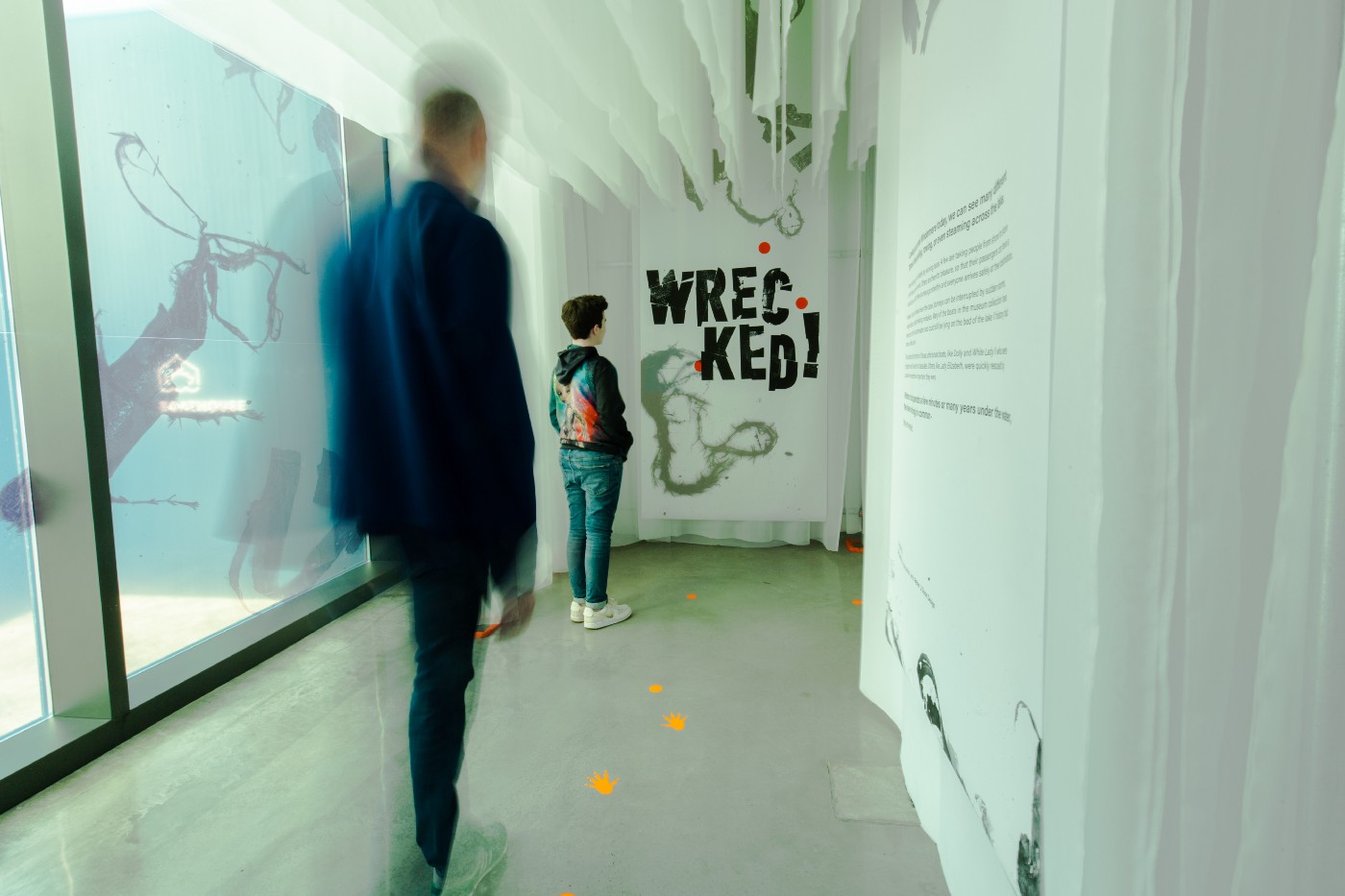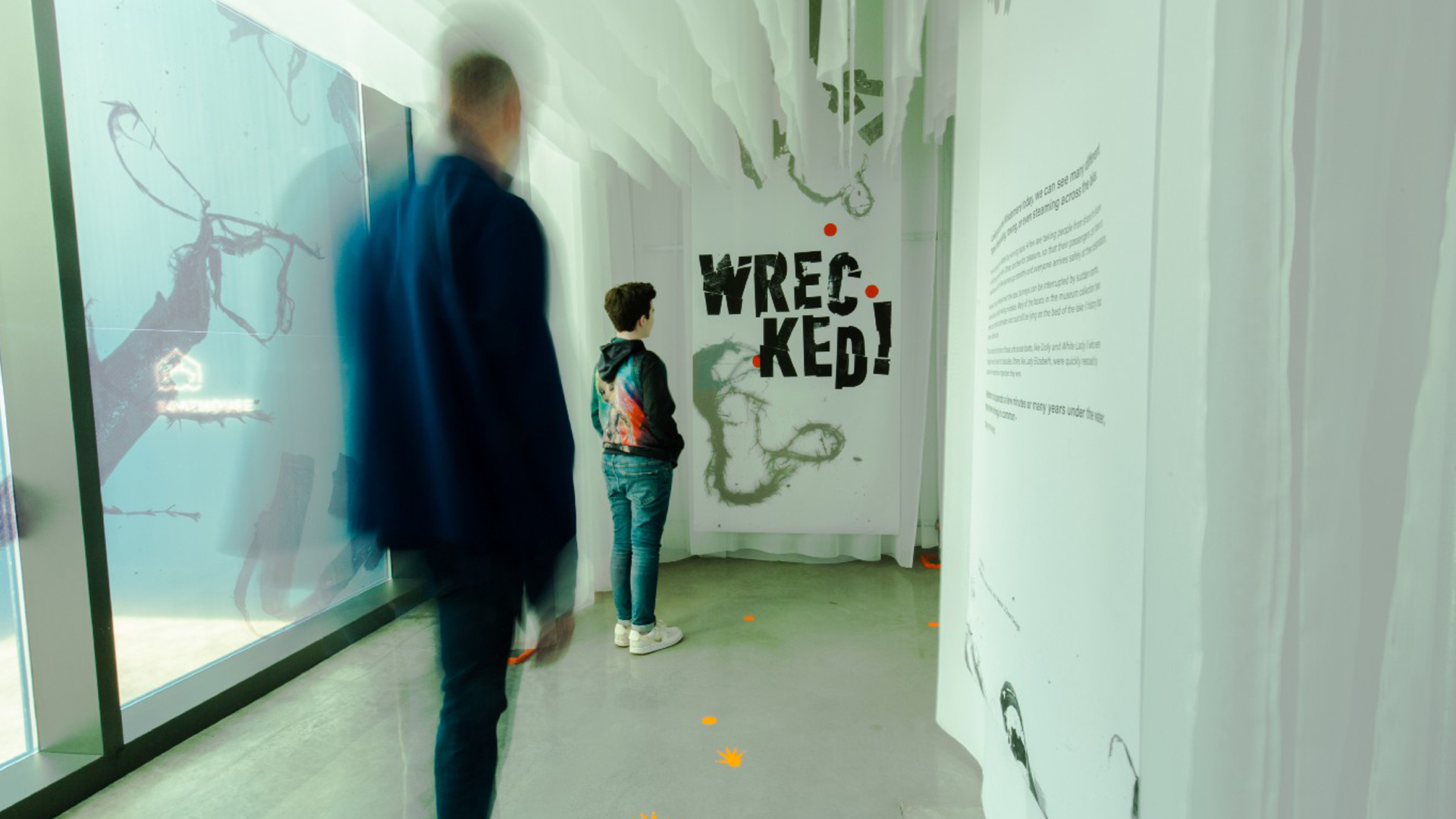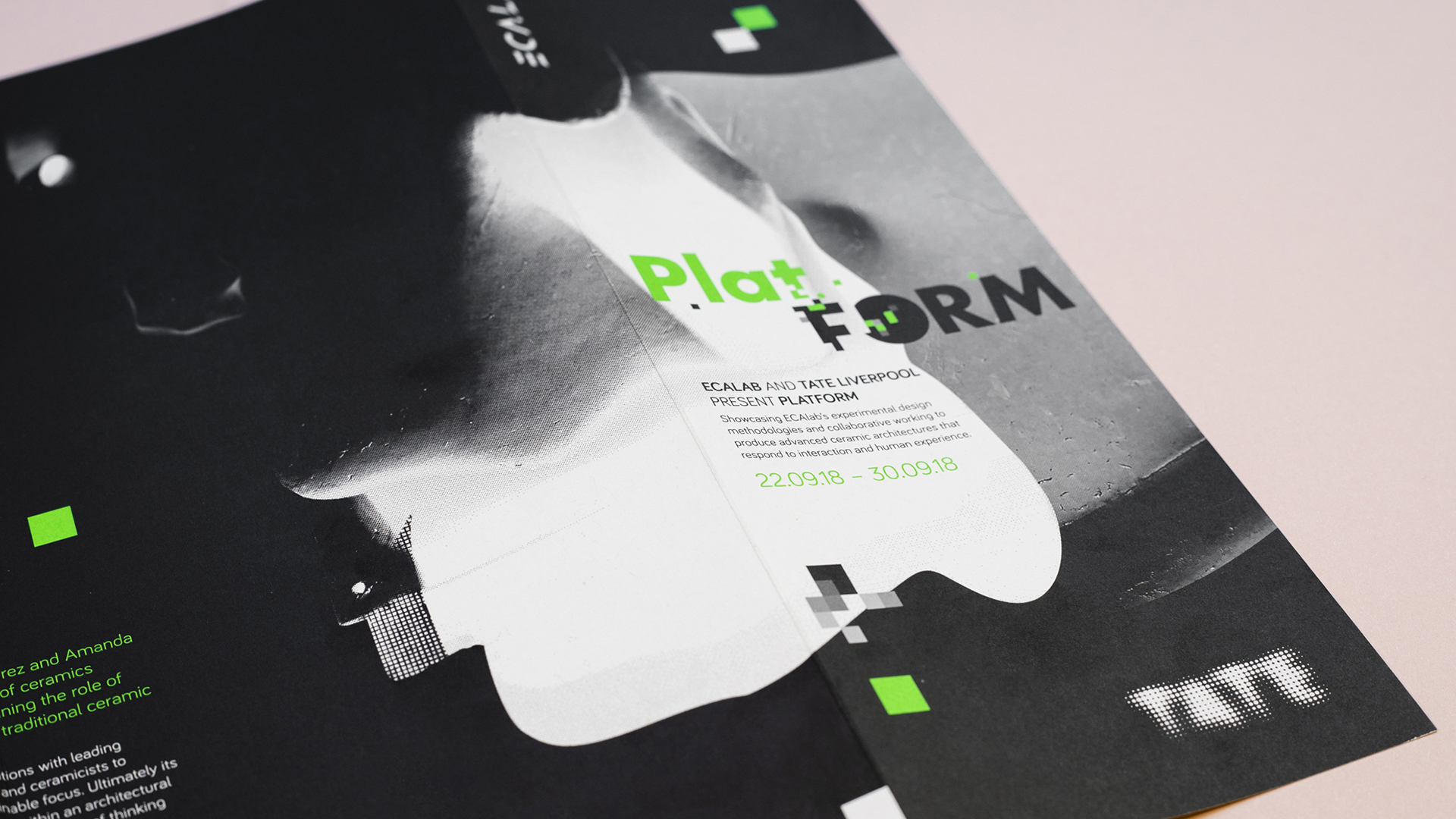Sheffield design studio Field have teamed up with The Windermere Jetty Museum and The Knotted Project to create 'WRECKED!', an immersive and experiential exhibition chronicling the stories of lost boats, objects and lives on the bed of Lake Windermere. The museum is Lakeland Arts flagship project, a striking black boatshed perched along the edge of Lake Windermere. The RIBA Stirling Prize 2021 shortlisted space, designed by Carmody Groake, juts into the water, welcoming visitors to land, from water, and into a museum space, café and visitor centre.
“The challenges in this project were the starting points for its best features”, says Field’s creative director Jonny Briggs. “The budget was modest and the space was huge. It’s a new focal point on the Lake District’s most commercial lake, but the building shows a darker, more jagged side to Lakeland life. It forced us to be inventive, and we created a world within a world here that brings depth to the museum experience.”
The re-imagining of the space, with a sub-structure of scaffolding, and the use of fabric, light and air feels like a descent into the water, bringing drama to the minimalist interior just as the building does to its surroundings.



“We transformed a white room into a space that immediately immerses the visitor, and not only presents the fascinating stories of Lake Windermere, but makes you feel part of them in an engaging, sensory experience”,says Field’s project design lead Emily Appleton.
The scaffold structure cuts into the cavernous gallery and carves up the room, lowering the ceiling. Lengths of voile soften the space and move gently in the air flow and water-vapour mists (requirements of the museum to maintain their impressive collection of historic boats).
Sounds and images flicker through the gently lapping fabric, translucent green window vinyl and lighting gels cast a watery light that deepens as you travel through the room – the display of artefacts becomes a compelling, multi-sensory experience.
“There’s even a slight creak from some of the scaffolding,” adds Peter Dixon, who led the Architectural interpretation for the project, “so that, along with this sort of ‘mistiness’ from the humidity controls, light effects and sound provides a sense of theatre and ambience of being submerged within the depths of the lake. Ultimately you feel as if you’re in an altered world before you emerge back out of the depths and into the museum, as if you’re rising to the surface again at the end.”


The client – Lakeland Arts – hadn’t been looking for designers to collaborate with at first. “We were initially looking for artists to bring the artefacts to life, to make it an experience,” explains Ben Ben Haigh, the Exhibitions & Collections Manager. “But Field presented some thinking that seemed to cross from design into the artistic and back again. They’ve given the show a strong graphic identity and these familiar graphic themes that run throughout, but they’ve also created a spatial experience, something that really engages people. It means they can relate to the lake on a different level, know it through different time periods, experiences and objects.”
Once the concept was agreed, it required a collective and co-ordinated effort to bring the approach and materials together to form this unique and intriguing exhibition. A local metal artist and fabricator treated steel panels to create a sense of age and decay. Field worked with the team from Knotted Project to maintain a cohesive and compelling narrative across the site while members of the museum team assisted with the installation. The legacy of the project was also a major consideration. “The simple intervention of scaffold, steel and fabric allows us to consider sustainability and the life of the materials after the exhibition” explains Jonny. “The scaffold will be dismantled and moved on to another site, the fabric will go to local colleges and the display cases re-purposed”.
“I like to think we’ve shown what can be done”, says Emily “even with a limited budget and challenging space. It was about teamwork, getting creative, and a commitment to delivering a conceptually strong narrative within a limited footprint. I’m really proud that we ultimately built what we intended to - we didn’t compromise and we found a way. It made it fun to work on and paid off for the visitors.”
Even running through parts of the pandemic, and restrictions, Wrecked! has seen an increase in visitor numbers to the centre. The exhibition is open until March 6th 2022 and a decision is pending on its extension until April 19th 2022.



